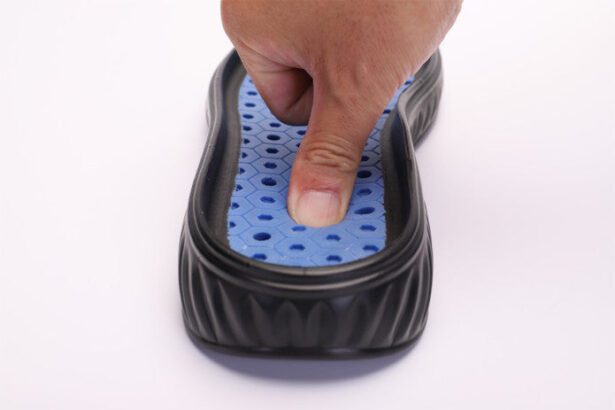This September, the recycling month of the year, a small ode to footwear label Oceedee which now pushes reuse and upcycling as brand-building.
In June this year, homegrown footwear brand Oceedee launched ‘Nakshi’, an upcycled footwear collection designed in collaboration with designer-entrepreneur Ashita Singhal’s textile company Paiwand. A year in the making, the collection introduced a new material innovation technique christened ‘Re-leather’. “The challenge was to introduce handwoven fabric and waste leather into footwear,” says Neha Kumthekar, co-founder of Oceedee. A selection of pumps and sling-backs in black and beige featured woven surfaces by Paiwand using the company’s textiles. The capsule enabled the brand to reuse 80kg of its waste and leather offcuts.
‘Nakshi’ brings together mindfulness with design innovation in a manner that has come to define the aesthetics of Oceedee. The made in India footwear label founded by Kumthekar and Anshul Sood in 2015, from the Noida-headquartered startup has carved a niche for itself based on a digital-first model. It also boasts of smart collaborations and, a distinctive grammar of products that stand out in a market cluttered with derivative designs.

Architecture, Form and Shape

Shoe Time
A peep toe, a one-inch ballerina and a three-inch pump recur across all collections, and comprise the brand’s bestsellers. While its stilettos are often spotted on celebrities and influencers, Oceedee’s biggest sales come from block heels, loafers and mules. Kumthekar explains that 80 per cent of their shoes are constructed for everyday wear—slip-on sliders and mules with 1-2 inches of heels; back zippers and S-straps add to the ease of wearing. The remaining part of a collection offers more complex, experimental designs. Last fall, Oceedee debuted the Wesley, a close-toed sandal which replicated the derby shoe style but with open sides and straps. A collection of 28 or 30 pieces spans seven to eight designs.
The brand’s collaborations have also gained attention. Oceedee partnered with designer Rahul Mishra over several seasons. In 2021, it collaborated with sustainable clothing label Doodlage to offer footwear designs drawing from the Charbagh—a geometrical method of landscaping.

A Conscious Make
The Oceedee x Doodlage line was also one of the brand’s early experiments with upcycling; Kumthekar and Sood started looking into recycling and waste management methods in 2020, in the wake of COVID-19. Kumthekar notes that they produce up to 11kg waste on an average daily. The collection with Doodlage, a brand known for creating clothes with factory waste, proved to be Oceedee’s first successful attempt at reusing leather offcuts as upcycled patchwork.
Kumthekar and Sood do not describe their brand as sustainable. Working with a material such as leather, their model is to offer transparency in how they the brand functions. A made-to-order model solves the challenge of excess production. It sources raw material from a LWG-certified tannery (the certification ensures a responsible leather supply chain) and ensuring fixed wages for their workforce—other industry best practices the cofounders take immense pride in.

Shoeing India
Oceedee’s evolution has coincided with a shift in shopping patterns among Indian customers. More and more people now choose to fill their carts online, yet shoe-shopping remains a touch and feel experience. “For us, that’s where popups and [trunk] shows really helped. We also arranged video calls with customers to understand exactly what they wanted,” explains Kumethkar. As the brand gained momentum, so did their physical presence. Oceedee is now available in multi-designer store Amethyst in Chennai, and at retailers such as Regal Shoes, Shoetree, Centro and most recently at Rapport Shoes in Hyderabad. The plan eventually is to build exclusive experience centres.
The Oceedee team too has grown—the brand’s design headquarters in Noida has 55 artisans along with design and operational staffers. According to Kumthekar, 90 per cent of their employees have been working with them since the beginning of the brand. For Kumthekar and Sood, working together comes easy. Kumthekar, a psychology and communications graduate works on the design, marketing, communication and customer relations while Sood, who is also CEO, oversees finance and sales. They fondly refer to each other as yin and yang.
The aim along with brand growth and expansion is to continue with design experiments. The success of a great design often lies in how easily it can be recognised. Take French footwear designer Christian Louboutin’s red-soled shoes for examples, or French fashion brand Jacquemus’ compact purses with curved top handles. Earlier this year, Oceedee tried to create a signature of its own—a “twisted block heel” which debuted in the ‘Dynamique’ collection. As the brand grows bit by bit, so does its team’s ideas. “It has also been one step at a time for us,” says Kumthekar. “We wish to take things slow but there’s a lot more to be offered in terms of innovation.”
SOURCE: https://www.thevoiceoffashion.com/centrestage/features/oceedees-mindfully-mod-footwork-5625




